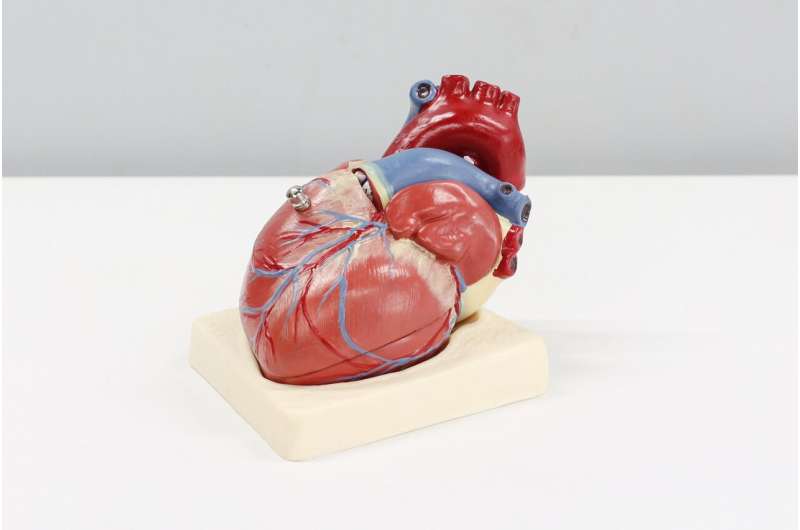
Medical computing scientists at King’s College London have developed a new way to detect early warning signs of sudden cardiac arrest, by analyzing the shape of a person’s heart with machine learning methods.
The research, published in EP Europace, was tested by analyzing MRI images from 156 patients with dilated cardiomyopathy, a deadly heart muscle disease. The patients who later experienced sudden cardiac arrest could be detected by subtle changes to their heart shape, thought to be signs of worsening disease.
Dr. Pablo Lamata, Professor at King’s College London School of Biomedical Engineering & Imaging Sciences, who led the research said the new heart shape analysis method has implications for the use of defibrillator implantation therapies.
“There are people that are missed who die of sudden cardiac arrest because it was not known that they needed it. Clearly by better identifying patients who do need defibrillators we can save more lives, save money and prevent unnecessary treatments,” says Dr. Pablo Lamata, senior resesarch fellow.
Data shows that only 50 percent of sudden cardiac arrest cases involve prior symptoms. Many of these patients’ lives could be saved with implantable defibrillators if only clinicians knew that they were at risk.
“Given to the right patients, implantable defibrillators prevent cardiac arrest by automatically shocking the heart back into a normal rhythm. However, finding out which patients are actually in need of an implantable defibrillator is a difficult challenge,” Dr. Gabriel Balaban, postdoctoral researcher.
The use of defibrillator implantations is controversial. Previous medical studies have shown that for every defibrillator implantation that saves a life, there are about 10 to 40 that are unnecessary.
As around 85,000 defibrillators are implanted each year in Europe, it is a big problem, both in terms of cost and patient complications.
Each defibrillator implantations costs around €46,000 over the lifetime of the patient and brings a risk of very powerful unnecessary shocks.
“With further testing and more patient data, we hope to develop our heart shape analysis method into a practical tool for cardiologists to select the right patients for treatment with implantable defibrillators,” Dr. Lamata said.
An online service providing access to the new heart shape analysis method is now being released.
Cardiologists and other researchers only need to upload the borders of the heart, which is anonymous, and safe to share.
In return the service provides a 3D shape model and a sudden cardiac arrest risk score, so that the newly developed risk prediction techniques can be further tested by other groups.
Source: Read Full Article





